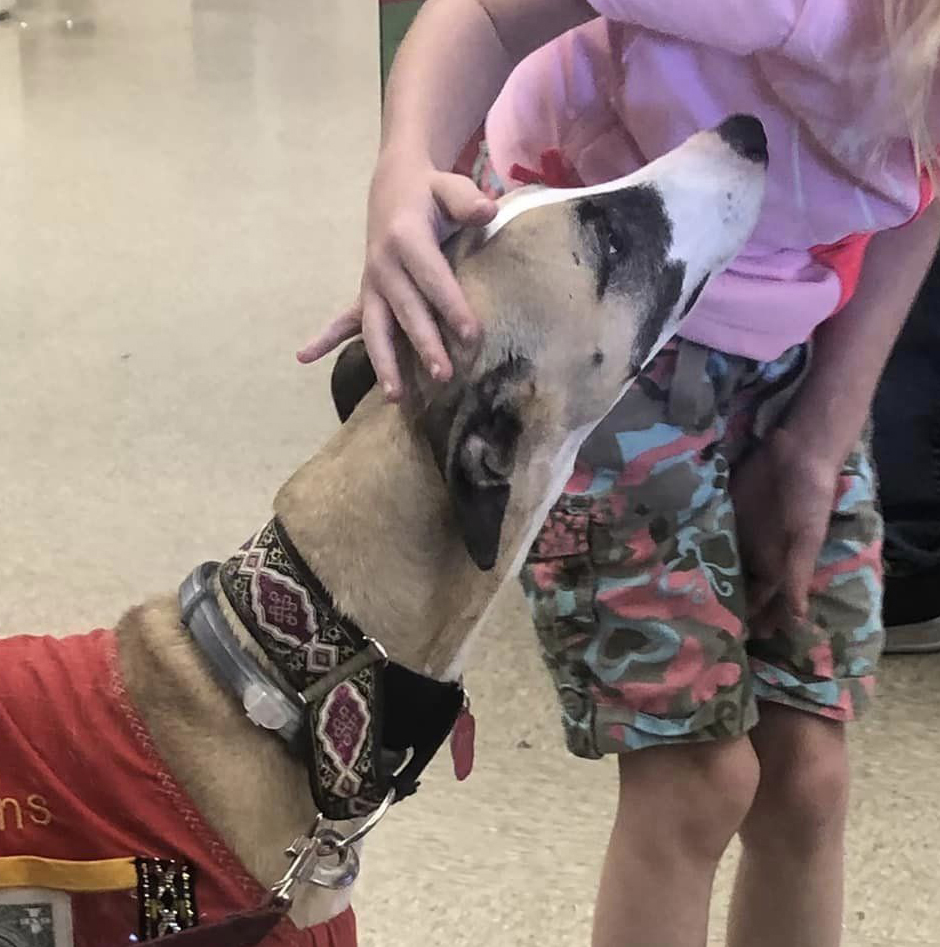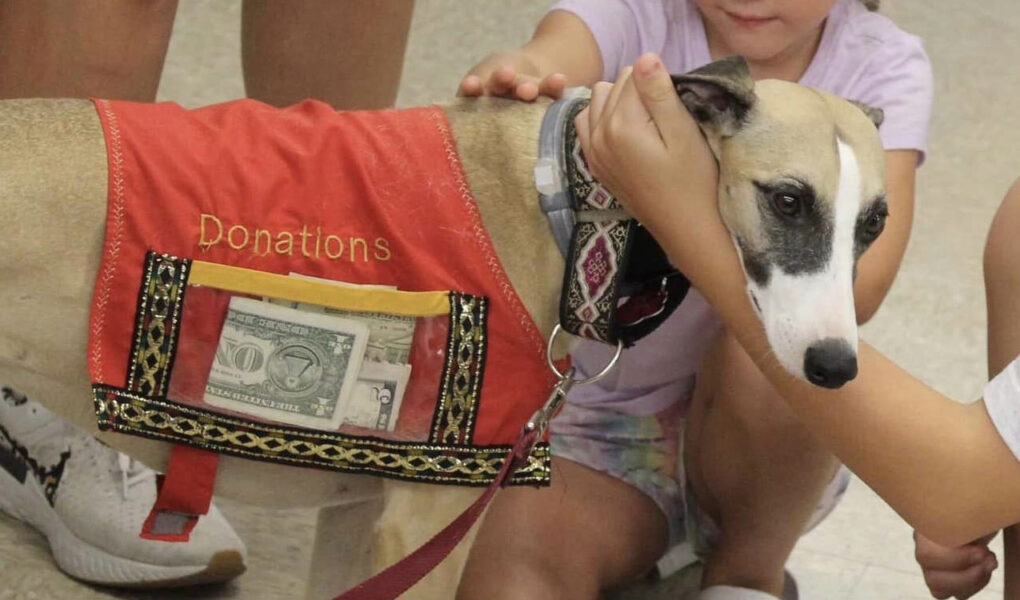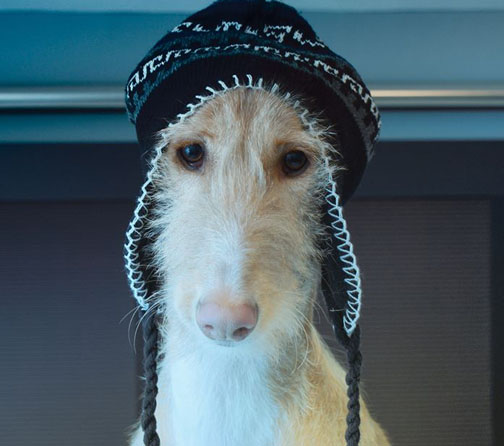One of the most common points of confusion when it comes to dogs with jobs, is the difference between service dogs, emotional support dogs, and therapy dogs.
Service dogs are highly trained animals who are certified to perform specific tasks for their handlers. SHUG does not adopt, train, or otherwise work with service dogs in any capacity.
When it comes to emotional support dogs, we've expressed strong feelings in the past. In the post This is not your dog we explained why we do not adopt our dogs as emotional support animals.
There are, however, many sighthounds who have flourished as part of therapy dog teams--including John, the Greyhound in the SHUG logo. While therapy work is not for every dog, many sighthounds blossom when providing comfort to those in need.
Below is the story of Rye, a Whippet who has changed the life of a young girl through her visits. Rye's mom says:

I find therapy dog work very fulfilling, and the dogs themselves LOVE it. There are many facilities that happily welcome therapy dog visits. Some require specific certifications, but many just ask that the dogs be very well behaved and up to date on their vaccines. It’s important that the dogs like people, don’t jump up, and take treats gently.
I recently started visits with a young girl. Mariah is autistic and is in a foster home with an organization that provides specialized foster care. She was having a bad day one Saturday at PetSmart, and we happened to be there doing our monthly meet & greet.
As soon as she saw Rye, Mariah approached. Rye especially loves children and quickly engaged and Mariah’s day was instantly better. Her foster mother asked for my number and we discussed arranging regular visits for the two new friends.
Mariah has a difficult time with reading and spelling and her foster mother felt that Rye could help her build confidence. We met with the Director of the foster organization, who could see the strong bond between Rye and Mariah. He approved regular sessions and Mariah was thrilled. “Rye doesn’t judge me,” she told us.
Now we meet at a local library every week, where Mariah reads to Rye and tells her how to spell words. In a few week’s time Mariah’s reading has improved significantly, and she’s gone from Ds to Bs on her spelling tests! She now happily reads and spells with her foster mom in between our visits, something she was unwilling to do before she met Rye.
--Cindy, Rye's Mom
The most important characteristic of a therapy dog team, is the relationship between handler and dog. While Rye shines as the star of the show, it is the support she gets from her mom that allows her to provide comfort to Mariah.
Hospitals, assisted-living facilities, and other organizations are eager to welcome therapy dog teams. Often patients who appear disengaged and non-verbal, can connect with the dogs in ways they can't to other people. Their caregivers are amazed to see them chatter away when “their” dog arrives.
Being a part of a therapy dog team isn't easy. It requires a commitment of your time and will expose you to the highs and lows of working with people in need. Your dog could make a difference in someone’s life….and, in turn, your own.


